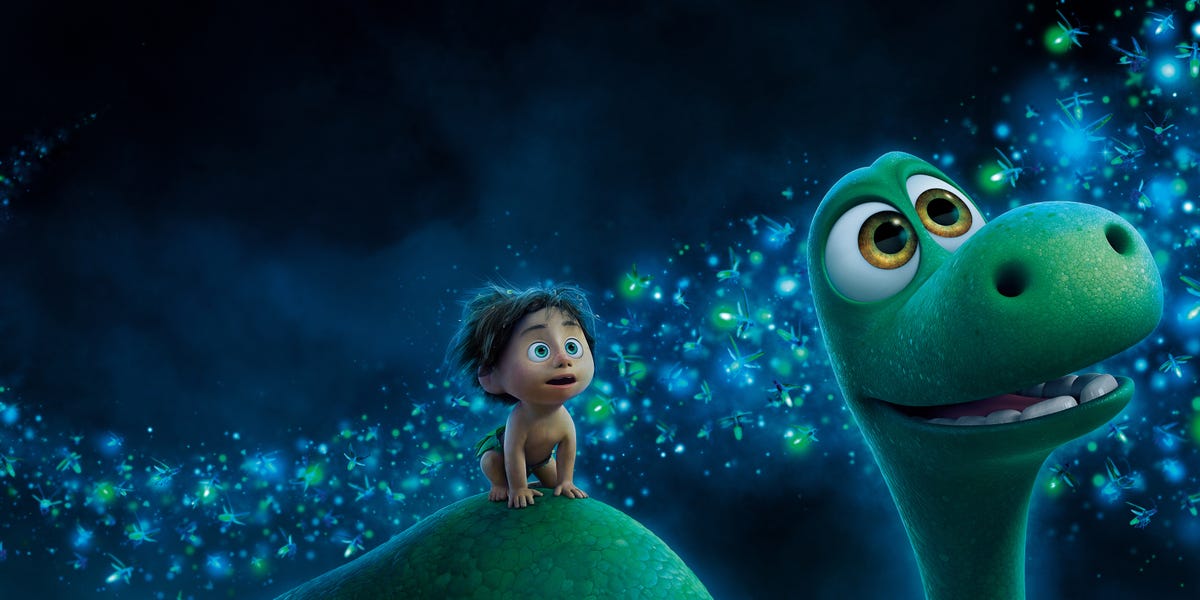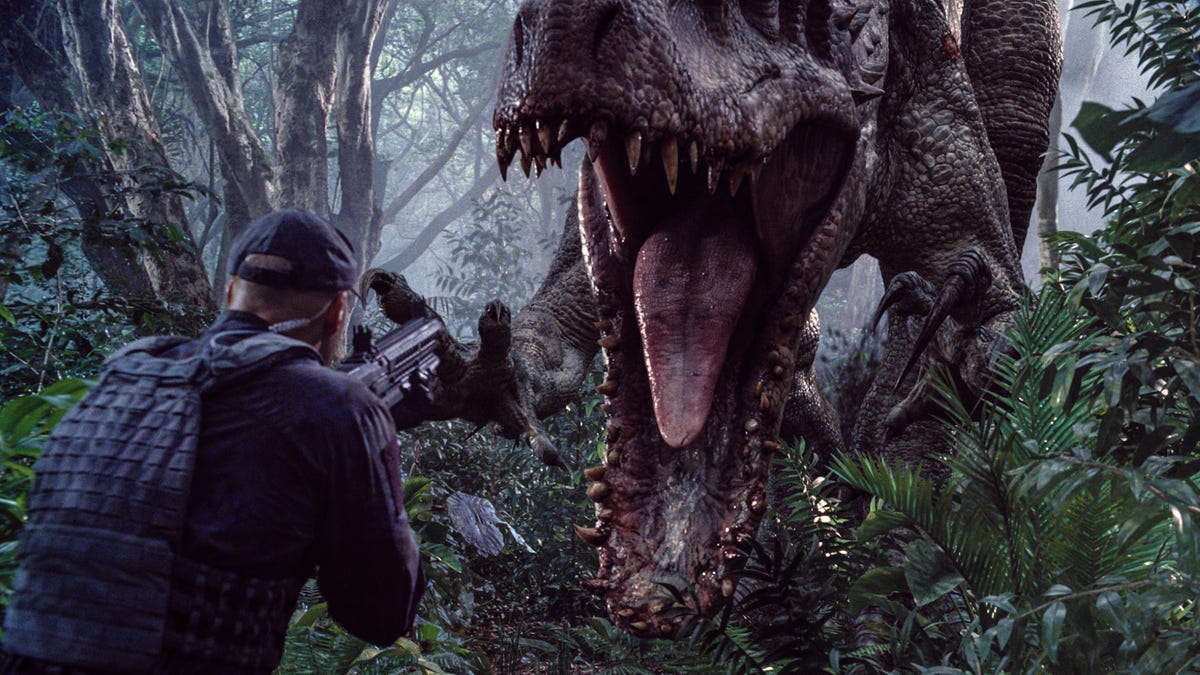This is what would happen if we still had dinosaurs
What if the asteroid had missed? That's the premise behind a new Pixar film...which, researchers say, may be more scientifically accurate than you think

A modern day with dinosaurs
Ever wonder what would happen if that asteroid had never hit our planet 66 million years ago? The film "The Good Dinosaur" envisions long-necked sauropods as farmers who can speak; humans are seen as little more than barn pests.
Scientists have mulled this question, too, and they have theories, if not answers ...

We wouldn't look like this
Scott Persons, a paleontologist at the University of Alberta, says that an alternate, dinosaur-filled Earth would definitely mean a different evolutionary path for humans. It's almost certain that we wouldn't be big enough to handle this gun, much less face off against the dino shown here in "Jurassic World."
The reason? Ecological exclusion -- brutal competition for food and other resources.
We'd be as small as...this guy?
"There were mammals at the time" of the asteroid impact, Persons says. "But the mammals were all really small; the biggest was the size of a badger."
In fact, before the asteroid hit, your typical mammal looked more like this modern-day shrew.
We couldn't get big
That's because, at the time of the asteroid, what the dinosaurs wanted, the dinosaurs got...at the expense of the rest of the ecosystem, which looked more like this guy, a cautious little mammal that lived around the same time as the T. Rex.
Those sizing trends would likely have continued into the modern day, with large dinosaurs hogging the resources that others species would need to grow larger bodies.
And we'd still live in trees
"You might have a small tree-dwelling type" of quasi-human, Persons speculates. But a 6-foot-tall Homo sapiens that could live at ground level? With all those T. Rexes stomping around in the same space? Probably not.
"The development that allows dropping down out of trees, down to the ground, is usually associated with larger body size," Persons explains.
The apatosaurs: Dumber than this
In "The Good Dinosaur," a long-necked apatosaurus named Arlo can speak. However, Persons says, Arlo doesn't fit the scientific reality.
Big, dumb, but still alive
All of the dinosaurs of the Upper Cretaceous period, including T. rex, had been developing bigger brain pans and getting more intelligent in the process...all, except for long-necked sauropods.
"If anything, they seem to get dumber" during the period before the asteroid, Persons says.
And talking apatosaurs? Please
Paleontologists wonder if late apatosaurs had traded some of their brain power for the continued ability to feed high in the treetops.
No matter what the reason, the evolutionary pattern is clear: Sauropods' dwindling brainpower would likely have continued into modern day.
Today's apatosaurs would be kinda stupid
The reason? Those long, long necks.
"If you have a great big brain stuck on the end of a long neck, that has a huge demand on your heart," Persons explains. One way to relieve that muscle? Grow a smaller head. And, therefore, a smaller brain.
They might chirp though
"Many, many dinosaurs were musical, just like modern songbirds," Persons points out. "They had crests and sophisticated nasal passages that turned noses into harmonicas."
Cut to today, and many dinosaurs, had they lived, might "talk" thought intricate, avian-style communication.
But others would probably talk...really
Amazingly, Persons says, if dinosaurs had survived into the modern age, some might very well be having conversations with us.
"It absolutely seems to be the case that in most dinosaur groups, there was a slow but steady progression toward increased intelligence," Persons says. "By the end of the cretaceous, you have the smartest dinosaurs that ever were."
T. rex could be even more terrifying
If that asteroid had missed Earth 66 million years ago, we'd likely still have Tyrannosaurus Rex today. In fact, they might even be deadlier.
Scary evolution
How do we know?
"Their ancestors had normal arms," not the teeny arms associated with the latest T. rex fossils, Persons says. T. rexes also had lost a finger during their evolutionary process, morphing from a three-fingered hand to a two-fingered appendage. Meanwhile, their jaws were getting bigger and nastier. All that adds up to...
T. rex: Deadlier bite
"A future tyrannosaur might be armless, or have just one finger on each arm," Persons says. But its jaw was getting even more powerful, all the better to cut through armor plating and horns.
"It had the most powerful bite of any animal that we know of, and it could have continued to have an even more powerful bite."
Horned dinosaurs: Even bigger
The reason why T. rex's jaws were getting bigger? Its prey was getting tougher.
"T. rex was trying to munch on huge horned dinosaurs [like this ceratopsian, whose skull was recently discovered by Persons] and armored dinosaurs. These were the brutes of the herbivores," and were generally getting bigger and harder to chomp on, Persons says.